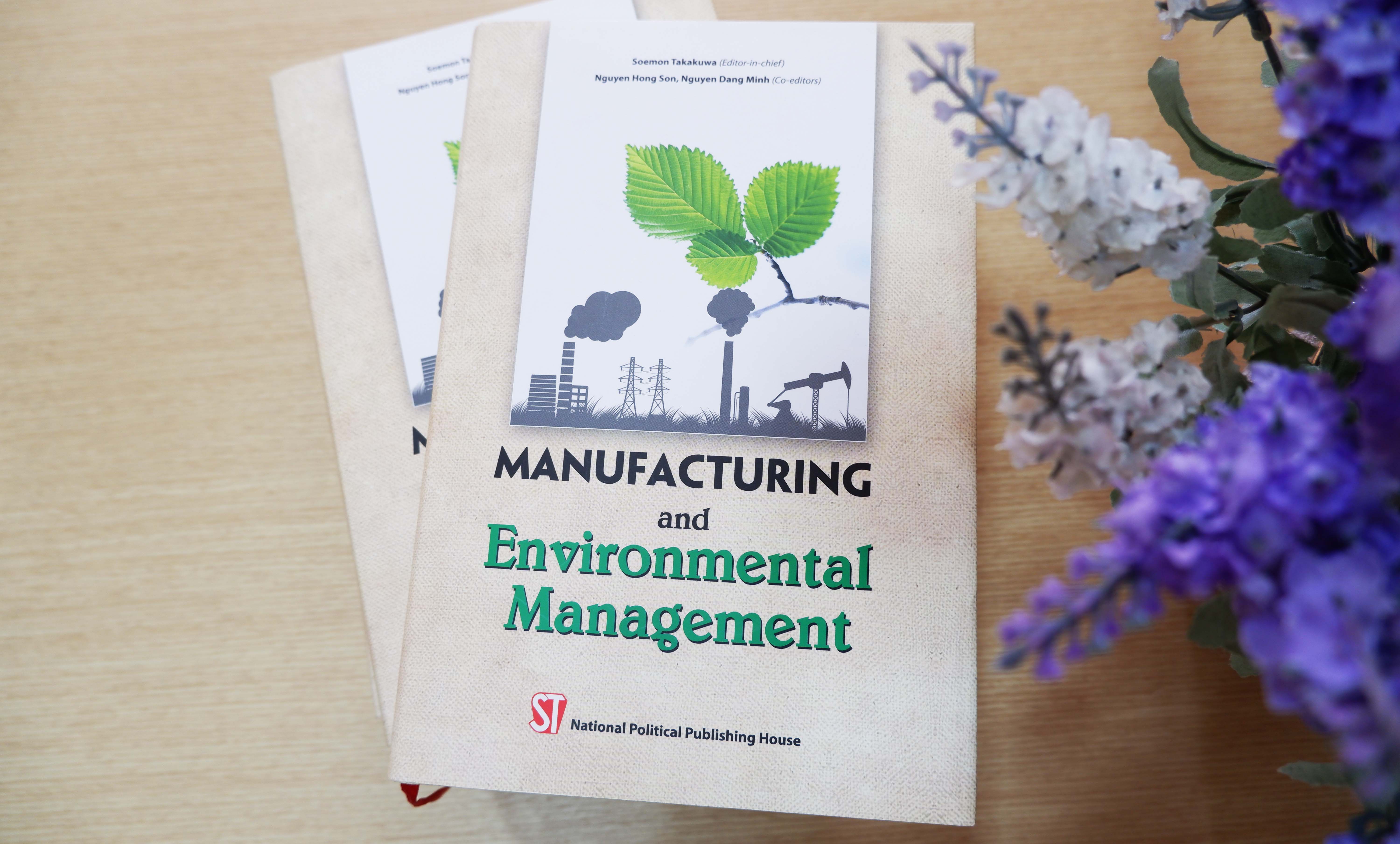Manufacturing and Environmental Management
Author: Soemon Takakuwa (Editor-in-chef), Nguyen Hong Son, Nguyen Dang Minh (Co-editor)
Publish: National Political Publishing House, 2012
Size: 16 cm x 24 cm
Page number: 370
Price: 500.000 VND

The daily and economic activity of humans are closely related to the global environment. Our current socioeconomic system is responsible for the construction Samsung tremendous amount of natural resources and energy the consumption of tremendous amount of greenhouse gas GHG, including carbon dioxide (CO2) and the disposal of tremendous amount of the wastes.
Organization, including private companies must adopt environmentally conscious approaches to all of their product, services and business activities. The approaching include striving for energy efficiency, conservation of natural resource, and wastes production.
Environmental issues caused by industrial activity include emission to the air, noise, odor, vibration, and contamination of land by wastes dumping, contamination of Water by discharges into stream and sewer, spills and discharges on land, contamination underground water.
Mitigating the adverse effects of business operation on the natural environment in the main purpose of Environmental Management.
In recent years, as awareness of the importance of environmental protection has increased, environmental performance has become an important measure of the value of business organizations in addition to their business performance and their contribution to society.
Discussion environmental performance encompass the following key elements: (1) Sustainable development (2) Extended producer responsibility (EPR), and (3) Environmental Management
Keeping in mind the aforementioned issues, researchers, experts and governmental agencies have been conducting a set of joint research and education activities entitled “Manufacturing and Environmental Management” in the Asian CORE Program of JSPS (Japan Society for the Promotion of Science) since April 2008.

This book is an excellent summary of the research and experience of Japanese specialists in environmental management and energy conservation.
Chapter 1: Manufacturing and Environmental Management from the Standpoint of Management of Technology
Chapter 1 provides a general introduction to the relationship between Industrial activity and environment issues as well as an introduction to manufacturing and Environmental Management from standpoint of technology management
Chapter 2. Environmental Problems and Environmental Policies in Japan
Chapter 2 focuses on a series of environmental problems, from industrial pollution history to recent global warming as well as Japanese policies, technologies, product advantages and other related subjects.
Chapter 3. Management of Energy Conservation and the Energy Conservation Law
Chapter 3 introduces the outline, method, effect and related activities of the Energy Conservation Law of Japan from the perspective of energy management.
Chapter 4. Management System of Chemical Substances
Chapter 4 describes environmental and safety issues in the chemical industry, together with global trends in chemicals management and chemicals management policies.
Chapter 5. Manufacturing and Life Cycle Assessment
Chapter 5 introduces life cycle assessment (LCA), which is a method for quantifying environmental impacts throughout a product life cycle in terms of downstream industries, midstream industries and upstream industries.
Chapter 6. Approaches to Reduce Environmental Burden in Logistics and Supply Chains
In this chapter, environmental issues and supply chains within product life cycles are discussed, and the design and challenges of closed-loop and low-carbon supply chains for sustainability are reviewed
Chapter 7. Environmental Management System
Chapter 7 introduces environmental management systems. ISO 14000 and “Eco Action 21” system. In addition, the status quo and future developments are discussed.
Chapter 8. Material Flow Cost Accounting
In Chapter 8, an overview of MFCA and the background of MFCA standardization are discussed. The significance and difficulties of introducing MFCA to enhance resource efficiency in the supply chain are examined.
Chapter 9. Keidanren Action Plan on the Environment and a Low-carbon Society
Chapter 9 introduces the overall framework of Keidanren’s countermeasures with respect to global warming issues.
Chapter 10. Environmental Actions
Chapter 10 introduces various noteworthy environmental action plans from Toyota, Japan International Cooperation Agency and Asahi Kasei Group.
 English
English



